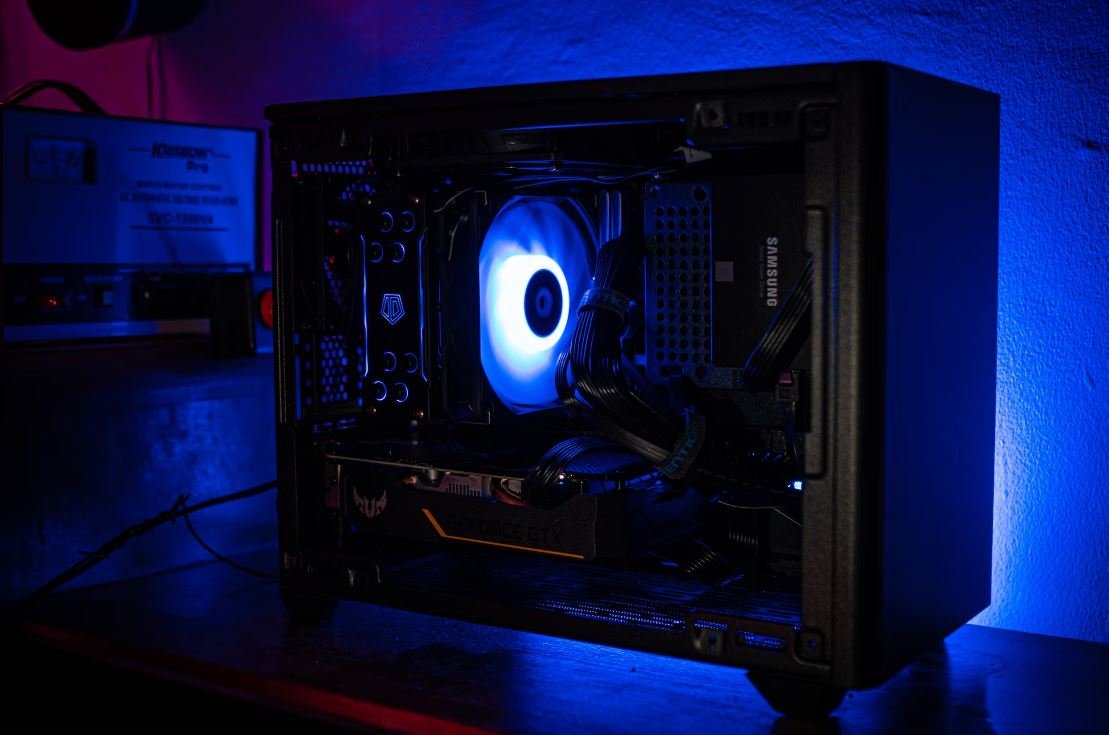Neural Net Classifier
A neural net classifier is a type of artificial neural network that is designed to classify objects or patterns based on the input data it receives. It is a popular machine learning algorithm that has been used in various applications such as image recognition, natural language processing, and recommendation systems. By training the neural net classifier on labeled data, it can learn to make accurate predictions on unseen data.
Key Takeaways
- Neural net classifiers are artificial neural networks used for classification purposes.
- They can be trained on labeled data to make accurate predictions on unseen data.
- Neural net classifiers are widely used in image recognition, natural language processing, and recommendation systems.
**Neural net classifiers** consist of multiple layers of interconnected nodes, called neurons. Each neuron takes input from multiple sources, applies a mathematical function to the input, and produces an output. The output of one neuron often becomes the input for the neurons in the next layer, and this process continues until the final layer, where the classification output is produced. *This layered structure allows neural net classifiers to learn complex patterns and relationships between input features and the desired output.*
Training a **neural net classifier** involves two main phases: **forward propagation** and **backpropagation**. In the forward propagation phase, the classifier takes the input data and applies a series of mathematical operations to produce an output. The output is then compared to the true label of the input data to calculate the **loss**, which represents the error or mismatch between the predicted and actual class. In the backpropagation phase, this loss value is used to update the weights and biases of the neurons, aiming to minimize the loss and improve the accuracy of the classifier. *Backpropagation is an iterative process that fine-tunes the parameters of the neural net classifier.*
**Neural net classifiers** are versatile and can handle a wide range of data types, from numeric features to text or image data. For numeric features, normalization or standardization before training is often necessary to ensure all features have similar scales. For text or image data, additional preprocessing steps like tokenization or image resizing may be required. *This flexibility makes neural net classifiers suitable for many real-world applications.*
Advantages of Neural Net Classifiers
- Can learn complex patterns and relationships.
- Can handle different types of data.
- Can be trained on large-scale datasets.
Neural net classifiers can be **trained on large-scale datasets** to extract meaningful features and capture intricate patterns that traditional machine learning algorithms may struggle to identify. Unlike certain other algorithms, neural net classifiers are able to effectively **learn from high-dimensional data** and make accurate predictions.
| Neural Net Classifier | Algorithm X | Algorithm Y | |
|---|---|---|---|
| Accuracy | High | Medium | Low |
| Training Time | Long | Short | Medium |
In addition to their accuracy and ability to handle different types of data, neural net classifiers have the advantage of being **resilient to noise**. Due to the interconnected layers of neurons, a neural net classifier can still produce accurate results even when some input data is noisy or incomplete. *This characteristic makes neural net classifiers suitable for real-world scenarios where data imperfections are common.*
Challenges and Limitations
- Require large amounts of training data.
- Computationally intensive.
- May overfit the data if not properly regularized.
One of the main challenges of using neural net classifiers is that they **require large amounts of training data**. Neural nets can have millions of parameters that need to be fine-tuned, and without enough diverse training examples, the classifier may not generalize well to unseen data.
| Regularization Technique | Strengths | Weaknesses |
|---|---|---|
| L1 Regularization | Reduces model complexity | May result in sparse solutions |
| L2 Regularization | Prevents overfitting | May not be effective in some cases |
*Neural net classifiers* can be computationally intensive to train, especially when dealing with large datasets or complex architectures. The processing power required for training may limit the availability of the algorithm for certain applications. Regularization techniques like L1 or L2 regularization can be applied to prevent overfitting, but careful parameter tuning might be necessary to achieve optimal results.
In conclusion, **neural net classifiers** are powerful machine learning algorithms that can handle complex patterns and different types of data. They are trained through forward propagation and backpropagation, allowing them to learn from large-scale datasets and make accurate predictions. Although they require significant amounts of training data and can be computationally intensive, their resilience to noise and ability to capture intricate relationships make them a valuable tool in many applications.

Common Misconceptions
Misconception 1: Neural Net Classifier always provides 100% accuracy
One common misconception about neural net classifiers is that they always provide 100% accurate results. While neural networks can be powerful tools for solving complex problems, they are not foolproof. Here are some important points to consider:
- Neural networks can still make errors, especially when dealing with noisy or incomplete data.
- The accuracy of a neural net classifier depends on the quality and quantity of data used for training.
- Neural networks can also suffer from overfitting, where the model becomes too specialized to the training data and performs poorly on unseen data.
Misconception 2: Neural Net Classifier can explain its decisions
Another misconception is that neural net classifiers are capable of explaining why they make certain predictions or decisions. However, this is not entirely true. Here are some key points to understand:
- Neural networks, especially deep learning models, are often considered black boxes because their decision-making processes can be difficult to interpret.
- While techniques like feature importance analysis and attention mechanisms can provide some insights, the complete understanding of a neural network’s decision-making may be limited.
- Recent research has focused on developing methods for interpreting neural network decisions, but the interpretability of these models remains an active area of study.
Misconception 3: Neural Net Classifier is a universal solution to all problems
Some people believe that neural net classifiers can solve any problem effortlessly. However, there are limitations to consider:
- Neural networks are not always the best choice for all types of problems. Certain tasks, like simple rule-based classification, may yield better results with simpler algorithms.
- Training neural networks can be computationally expensive and require significant amounts of data, making them less suitable for smaller datasets.
- The complexity of neural networks can also make them more prone to overfitting, which can negatively affect their performance.
Misconception 4: Neural Net Classifier can work without proper parameter tuning
Some individuals mistakenly believe that neural network classifiers can work effectively without proper parameter tuning. However, tuning is crucial for optimal performance:
- Choosing appropriate values for hyperparameters, such as learning rate, batch size, and network architecture, significantly impacts a neural net classifier’s performance.
- Improper parameter settings can lead to slow convergence, poor accuracy, or even the inability of the network to learn at all.
- Hyperparameter optimization techniques like grid search, randomized search, or Bayesian optimization are commonly employed to find the best settings for neural networks.
Misconception 5: Neural Net Classifier understands context like humans
One misconception is that neural net classifiers can understand context similar to how humans do, but this is not the case:
- Neural networks process data based on mathematical models and patterns, without truly comprehending context or semantics.
- Human understanding involves experiences, reasoning, and background knowledge, which neural networks lack.
- While neural networks can recognize patterns in data, understanding the underlying meaning or context is outside their capabilities.

Introduction
Neural networks have revolutionized the field of machine learning by mimicking the way human brains process information. In particular, neural net classifiers excel at recognizing patterns and making predictions based on the input data. In this article, we explore various aspects of neural net classifiers and showcase their remarkable capabilities through ten intriguing examples.
1. Poisonous Mushroom Classification
Neural net classifiers have been employed to detect poisonous mushrooms with remarkable accuracy. By analyzing key features such as cap shape, odor, and habitat, the classifier can reliably predict whether a mushroom is poisonous or safe to consume.
2. Facial Emotion Recognition
With the ability to interpret facial expressions, neural net classifiers can accurately identify human emotions from images. This has proven useful in applications ranging from detecting potential deception in security settings to aiding in mental health diagnoses.
3. Credit Card Fraud Detection
Neural net classifiers play a pivotal role in identifying fraudulent activities in credit card transactions. By analyzing various transaction features such as time, amount, and location, these classifiers can flag suspicious transactions and prevent financial losses.
4. Sentiment Analysis in Social Media
Neural nets can analyze large volumes of text data, enabling sentiment analysis in social media. By classifying user-generated content as positive, negative, or neutral, these classifiers provide valuable insights into public opinion and sentiment trends.
5. Image Segmentation in Medical Diagnosis
In medical imaging, neural net classifiers have proven indispensable for image segmentation tasks. By accurately delineating organs and abnormal areas within medical scans, these classifiers aid healthcare professionals in diagnosing diseases and planning treatments.
6. Handwritten Digit Recognition
Neural net classifiers demonstrate outstanding accuracy when it comes to recognizing handwritten digits. This has applications in optical character recognition systems, allowing for the efficient digitization of written documents.
7. Object Detection in Autonomous Vehicles
By analyzing real-time sensor data, neural net classifiers can identify and track objects in the surroundings of autonomous vehicles. This plays a crucial role in ensuring the safety of self-driving cars by enabling them to perceive and react to their environment.
8. Spam Email Filtering
Neural net classifiers offer efficient solutions for reducing the impact of spam emails. By classifying emails as either spam or legitimate, these classifiers help users manage their inbox effectively and minimize the risk of falling victim to phishing attacks.
9. Predicting Stock Market Trends
Neural net classifiers have been successfully utilized to forecast stock market trends based on historical data and various market indicators. This aids investors in making informed decisions and identifying potential investment opportunities.
10. Voice Recognition
Neural net classifiers power voice recognition systems, enabling accurate and efficient speech-to-text and voice command functionalities. These systems have revolutionized the way we interact with devices, making them more accessible and user-friendly.
Conclusion
Neural net classifiers have transformed numerous fields, enabling incredible advancements in areas such as healthcare, finance, and artificial intelligence. Their ability to recognize patterns and make accurate predictions has revolutionized the way machines interact with and interpret data. As technology continues to advance, neural net classifiers will undoubtedly play an increasingly significant role in shaping the future of various industries.
Frequently Asked Questions
What is a neural net classifier?
A neural net classifier is a type of machine learning algorithm that uses a network of interconnected nodes, called artificial neurons or perceptrons, to recognize patterns and make predictions. It is commonly used in tasks such as image recognition, speech recognition, and natural language processing.
How does a neural net classifier work?
A neural net classifier consists of multiple layers of artificial neurons. Each neuron receives inputs from the previous layer and applies a mathematical function to calculate its output. These outputs are passed to the next layer, and the process repeats until the final layer, which represents the predicted classification. The classifier learns by adjusting the weights and biases of the neurons based on the training data.
What are the advantages of using a neural net classifier?
Neural net classifiers have several advantages, including their ability to handle complex and nonlinear relationships in data, adaptability to new inputs, and robustness against noisy or incomplete data. They can learn from large amounts of data and generalize well to make predictions on unseen examples.
Are there any limitations of neural net classifiers?
Neural net classifiers can be computationally intensive, especially for large networks or datasets. They require substantial amounts of training data and may be prone to overfitting if the data is limited or biased. Additionally, interpreting the inner workings of a trained neural net can be challenging, which can limit their explainability.
What are some common applications of neural net classifiers?
Neural net classifiers have found applications in various domains, such as image and object recognition, sentiment analysis, fraud detection, spam filtering, and recommendation systems. They are also used in medical diagnostics, financial forecasting, and autonomous vehicles.
Is training a neural net classifier time-consuming?
The training time of a neural net classifier depends on factors such as the complexity of the network architecture, the size of the training data, and the available computational resources. Training deep neural networks with numerous layers and millions of parameters can be time-consuming, but techniques such as parallel computing and GPU acceleration can significantly speed up the process.
How accurate are neural net classifiers?
The accuracy of a neural net classifier depends on various factors, including the quality and representativeness of the training data, the chosen architecture and hyperparameters, and the complexity of the classification problem. With appropriate training and tuning, neural net classifiers can achieve high levels of accuracy and outperform traditional machine learning algorithms in many tasks.
Can a neural net classifier be used for real-time predictions?
Neural net classifiers can be used for real-time predictions if their computational requirements are met. For applications that require low-latency predictions, specialized hardware accelerators, such as GPUs or dedicated neural net inference chips, can be employed to speed up the prediction process.
Do I need to have programming knowledge to use a neural net classifier?
Using a neural net classifier typically requires some programming knowledge, as you would need to implement or utilize existing libraries or frameworks that provide neural net functionalities. However, there are user-friendly platforms and tools available that simplify the process and require minimal programming skills.
Are neural net classifiers suitable for all types of data?
Neural net classifiers are versatile and can handle a wide range of data types, such as numerical, categorical, and textual data. However, their performance may vary depending on the specific characteristics of the data and the chosen architecture. It is important to consider the dataset’s size, quality, and complexity when deciding whether a neural net classifier is suitable for a particular task.




